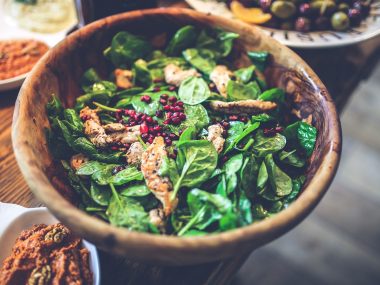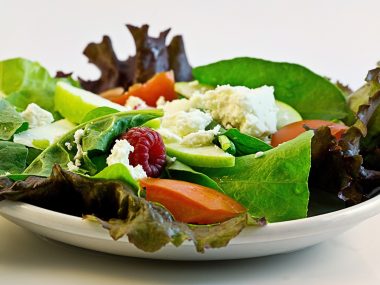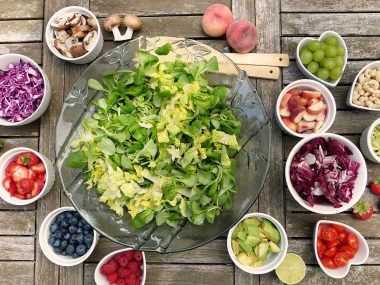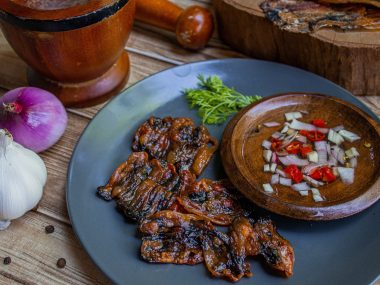How To Beat Weight Loss Plateaus.
Starting a weight loss journey is often filled with excitement and determination. However, at some point, many individuals encounter a frustrating obstacle known as a weight loss plateau. These plateaus occur when the body adjusts to changes in diet and exercise, resulting in stalled progress despite continued efforts.
The actionable tips and strategies will help you overcome weight loss plateaus and reignite your journey towards your goals safely and effectively.
Understanding Weight Loss Plateaus
Weight loss plateaus are a common occurrence on the journey to a healthier lifestyle. They occur when the body adapts to changes in diet and exercise, leading to a slowdown or cessation of weight loss progress.
Plateaus can be frustrating and disheartening, but they are a natural part of the process and can be overcome with the right approach.
1. Reassess Your Caloric Intake
One of the primary reasons for hitting a weight loss plateau is a decrease in metabolic rate as you lose weight. As you lose weight, your body requires fewer calories to maintain its current weight.
Reassess your caloric intake to ensure you are still in a calorie deficit. Consider adjusting your calorie intake slightly downward to continue progress.
2. Mix Up Your Exercise Routine
Your body can adapt to your exercise routine over time, leading to diminished results. Shake things up by incorporating new exercises, increasing intensity, or trying different workout modalities.
High-intensity interval training (HIIT), strength training, and circuit training are effective ways to challenge your body and stimulate further weight loss.
3. Focus on Strength Training
Incorporating strength training into your workout regimen is crucial for breaking through weight loss plateaus. Building lean muscle mass not only boosts metabolism but also improves body composition.
Aim to strength train at least two to three times per week, focusing on compound exercises that target multiple muscle groups.
4. Increase Non-Exercise Physical Activity
In addition to structured exercise, increasing non-exercise physical activity can help break through weight loss plateaus.
Take the stairs instead of the elevator, park farther away from your destination, or incorporate more movement into your daily routine. These small changes can add up to significant calorie expenditures over time.
5. Prioritize Protein Intake
Protein is a crucial macronutrient that plays several key roles in the body, especially during weight loss. Prioritising protein intake can help support muscle retention, promote feelings of fullness, and boost metabolism. Here’s how to prioritise protein in your diet:
- Include Protein with Every Meal: Aim to include a source of protein with every meal and snack to ensure you’re meeting your daily protein needs.
Good sources of protein include lean meats (such as chicken, turkey, and lean cuts of beef or pork), fish, eggs, dairy products (such as Greek yoghurt, cottage cheese, and cheese), tofu, tempeh, legumes (such as beans, lentils, and chickpeas), and plant-based protein powders.
- Choose Lean Protein Sources: Opt for lean protein sources that are low in saturated fat and calories. Choose skinless poultry, lean cuts of beef or pork, fish, seafood, and low-fat dairy products to keep your protein intake within your calorie goals.
- Prioritise Protein-Rich Snacks: Choose protein-rich snacks to keep you satisfied between meals and prevent overeating. Snack options include Greek yoghurt, cottage cheese, hard-boiled eggs, string cheese, protein bars, nuts, seeds, and edamame.
- Plan Balanced Meals: Build balanced meals that include a combination of protein, carbohydrates, and healthy fats to support overall nutrition and satiety.
Aim to fill half of your plate with non-starchy vegetables, one-quarter with protein, and one-quarter with whole grains or starchy vegetables.
- Consider Protein Timing: Distribute your protein intake evenly throughout the day to support muscle protein synthesis and satiety.
Aim to include protein-rich foods with each meal and snack, rather than consuming most of your protein intake in one large meal.
6. Increase Fibre Intake
Fiber is an essential nutrient that offers numerous health benefits, including supporting digestive health, promoting feelings of fullness, and regulating blood sugar levels.
Increasing fiber intake can help you feel satisfied on fewer calories and support weight loss efforts. Here’s how to increase fiber intake in your diet:
- Choose Whole Foods: Focus on consuming whole, minimally processed foods that are naturally rich in fiber. These include fruits, vegetables, whole grains, legumes, nuts, and seeds.
Aim to include a variety of fiber-rich foods in your diet to ensure you’re getting a range of nutrients and benefits.
- Eat Plenty of Fruits and Vegetables: Fruits and vegetables are excellent sources of fiber, as well as vitamins, minerals, and antioxidants. Aim to fill half of your plate with non-starchy vegetables at meals and incorporate fruit as a nutritious snack or dessert option.
- Include Whole Grains: Choose whole grains such as brown rice, quinoa, barley, oats, whole wheat bread, and whole wheat pasta over refined grains.
Whole grains retain more fiber and nutrients than their refined counterparts, making them a healthier choice for supporting weight loss.
- Incorporate Legumes: Legumes such as beans, lentils, chickpeas, and peas are rich in both protein and fiber, making them an excellent addition to meals and snacks.
Try adding beans to soups, salads, stir-fries, or dips, or enjoy lentils as a hearty base for vegetarian dishes.
- Snack on Nuts and Seeds: Nuts and seeds are nutritious, portable snacks that are rich in fiber, healthy fats, and protein.
Enjoy a handful of almonds, walnuts, pistachios, or pumpkin seeds as a satisfying snack between meals to boost fiber intake and promote satiety.
- Gradually Increase Fiber Intake: Increase your fiber intake gradually to allow your digestive system to adjust. Suddenly adding large amounts of fiber to your diet can cause digestive discomfort, such as bloating, gas, or constipation. Aim to increase fiber intake gradually by adding a serving or two of fiber-rich foods to your meals and snacks each day.
7. Stay Hydrated
Proper hydration is essential for overall health and can support weight loss efforts. Drinking an adequate amount of water throughout the day helps maintain hydration, supports metabolism, and may aid in appetite control.
This aims to drink at least eight glasses of water per day, and more if you’re exercising or in a hot environment.
8. Manage Stress Levels
High levels of stress can impact hormone levels and metabolism, potentially leading to weight loss plateaus. Practice stress-reducing techniques such as meditation, deep breathing exercises, yoga, or spending time in nature.
Prioritize self-care activities that promote relaxation and emotional well-being to support your weight loss journey.
9. Get Sufficient Sleep
Quality sleep is essential for overall health and can impact weight loss efforts. Aim for seven to nine hours of uninterrupted sleep per night to support hormone regulation, metabolism, and recovery.
Establish a consistent sleep schedule, create a relaxing bedtime routine, and optimize your sleep environment for restful sleep.
10. Be Patient and Persistent
Overcoming weight loss plateaus requires patience, persistence, and a positive mindset. Remember that progress may not always be linear, and occasional setbacks are a natural part of the journey.
Stay committed to your goals, trust the process, and celebrate small victories along the way. With dedication and perseverance, you can break through plateaus and continue moving towards your desired outcomes.
Conclusion
Weight loss plateaus are a common challenge on the journey to a healthier lifestyle, but they can be overcome with the right strategies and mindset.
By reassessing your caloric intake, mixing up your exercise routine, prioritizing protein and fiber intake, managing stress levels, and prioritizing self-care, you can break through plateaus and continue making progress towards your goals.
Be patient with yourself, stay persistent, and remember that every step forward brings you closer to your desired outcomes. With dedication and determination, you can achieve lasting success and enjoy a healthier, happier life.






